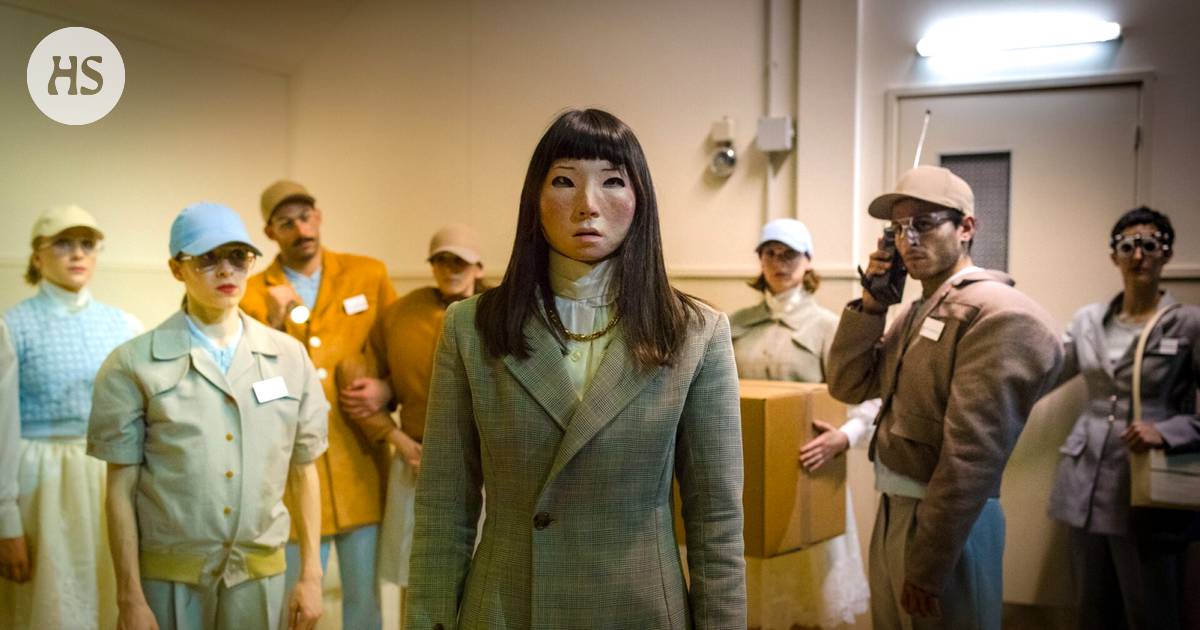Culture|Dance review
When watching Pasionaria, you have to remind yourself that the dancers are real people.
Contemporary dance
Pasionaria in Tampere-talo 6.8. La Veronal, Tampereen Teatterikesä and Tampere-talo, choreography and direction Marcos Morau, stage design Max Glaenzel, costume design Silvia Delagneau, sound design Juan Cristóbal Saavedra, video design Esterina Zarrillo, lighting design and technology Bernat Jansà, dancers Àngela Boix, Jon López, Ariadna Montfort, Lorena Nogal, Alba Barral, Marina Rodríguez, Sau-Ching Wong.
First the image is that I am following the avatar or virtual characters of a video game. The stage is limited to a screen, which is covered by a dark gauze. In the large staircase and in the foreground lobby, people move in the soft angular manner of digital figures.
of the La Veronal group Passionate-dance piece is described as reflecting the people of today, and questioning the world and the future. The work challenges us to think about the future, where man has become like a robot and works without emotions.
The end result is contradictory and exhausting.
Director-choreographer Marcos Morau has trained in dance, theater and photography in Barcelona and New York. He founded the La Veronal group ten years ago. During this time, Morau has made numerous works for his own group, visited as a choreographer in several important dance groups and received industry awards.
This summer, the La Veronal group has made it to Finland twice. The group performed their work at the Kuopio Tanssii ja Soi festival Sonoma and which premiered last Saturday at Tampere Teatterikesä in 2018 Passionaria.
Passionaria seven dancers excel in their avatar movements. The jerky and angular movement, full of restrained muscle tension, is at the same time startlingly soft and fluid. As with digital characters, anything seems possible for these dancers.
Still, he sometimes looks at just walking with confusion and reminds himself that this is a real person.
Pasionaria’s dancers move like avatar characters in a video game.
75 minutes in the long work, massive stage steps are carried up and down, cardboard boxes and a baby doll are transported, and even calls are made on a landline somewhere. In addition to the steps, the dance makes use of a long bench, sitting on which the only choreographic part of the piece shared by the whole group, of course very robotic, is performed.
Visually, there are flashlights, red light and strobe, the moon moving behind the window set and for some reason a gauze curtain covering everything for a long time, which is not used to any good. Or did something go wrong?
In contemporary dance works, I have long ago accepted a surrealistic stage image and gave up reasoning or thinking about the logical cause-and-effect relationships of an event.
This time as fascinating as it was to watch the dancers move, I got bored. If the goal of the piece was to make me as a viewer sink into a passive robot without emotions, it came close to that.
I didn’t even reach the mood of the end of the world, even though the piece ended with two figures smoking on the floor.
It’s a shame that the work itself was able to reach the absurdity of the trailer only in places.
#Dance #Review #Choreographerdirector #Marcos #Morauns #Pasionaria #challenges #future #man #robot #eventually #viewer #bored








